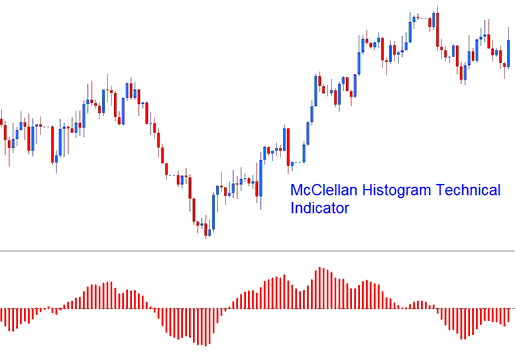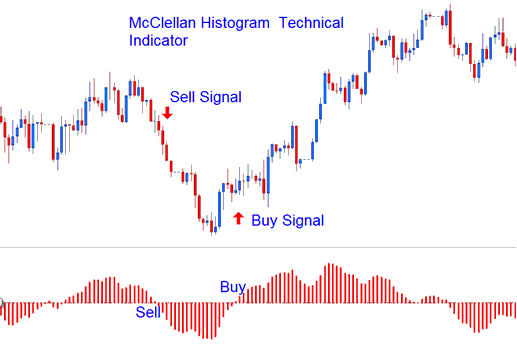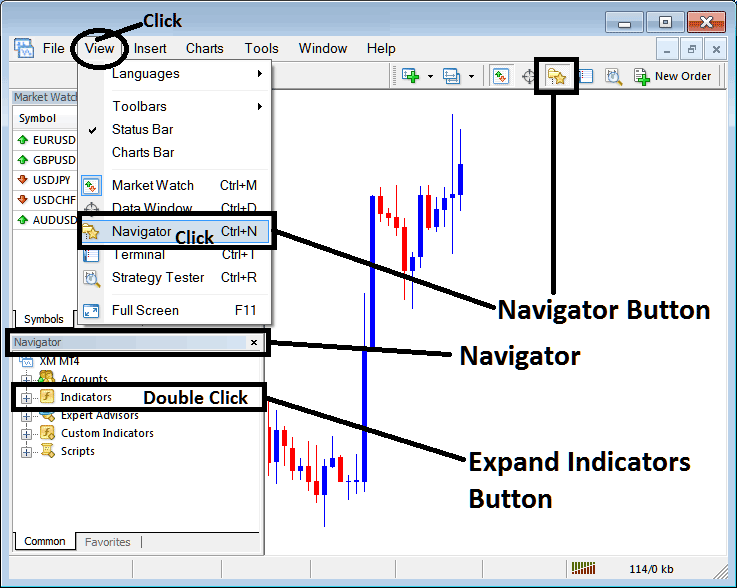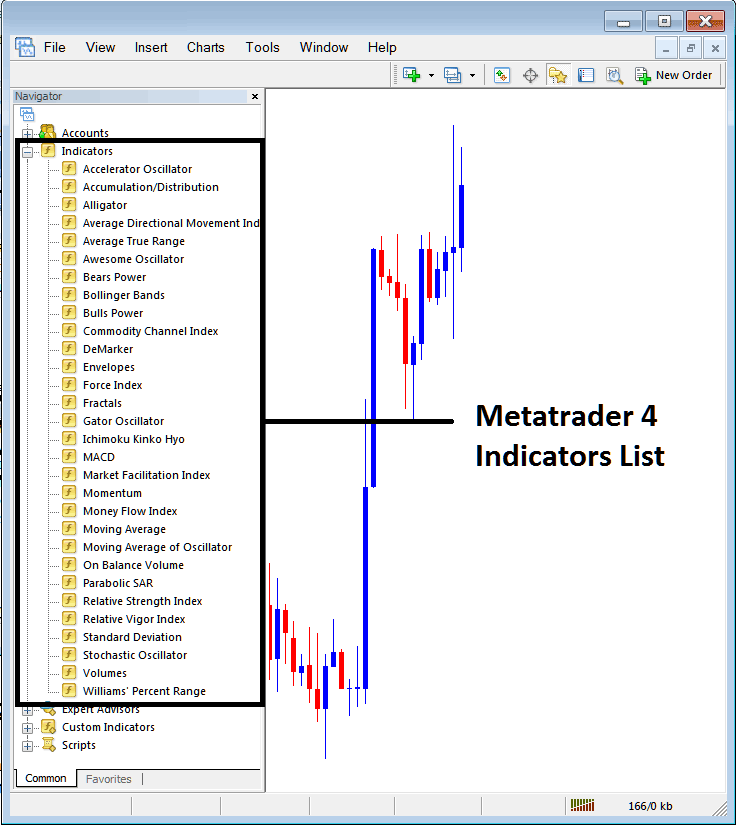How Do You Use McClellan Histogram MT4 Technical Indicator?
McClellan Histogram Technical Indicator Analysis Buy and Sell Signals
The McClellan Histogram indicator is a graphical representation of the McClellan Oscillator indicator and its signalline - the difference between the two is drawn as a histogram.
McClellan Histogram indicator is an oscillator trading - the center line is the zero crossover mark which is used to generate buy signals and sell signals.

How Do You Add MT4 McClellan Histogram Trading Indicator in MT4 Charts
How to Generate Buy and Sell Signals
The Histogram is momentum technical indicator. Signals are generated using the McClellan Histogram trading indicator center-line crossover trading strategy.
- Buy Trading Signal - McClellan Histogram trading indicator Above Zero center line mark
- Sell Trade Signal - McClellan Histogram trading indicator Below Zero center line mark
There are two forex analysis techniques for using McClellan Histogram indicator to generate trade signals.
Zero Level Forex Cross over Signal
When the McClellan Histogram indicator crosses above zero center line a forex buy signal is generated.
When the McClellan Histogram indicator crosses below zero center line a forex sell signal is generated.

Analysis of MT4 Indicator McClellan Histogram Technical Indicator
McClellan Histogram Divergence Forex - divergence trading between this McClellan Histogram indicator and the price can prove to be a very effective forex strategy in identifying potential trend reversal signals and trend continuation signals.
There are Several Types of McClellan Histogram Trading Indicator Divergence Signals:
Trend Reversal Signals - Classic Divergence Trading Setup Signals
- Classic Bullish Divergence Setup Signals - Lower lows on price & higher lows on the McClellan Histogram
- Classic Bearish Divergence Trading Setup Signals - Higher highs on price and lower highs on the McClellan Histogram
Trend Continuation Signals - Hidden Forex Divergence Signals
- Hidden Bullish Divergence Setup Signals - Lower lows on McClellan Histogram indicator & higher lows on the market price chart
- Hidden Bearish Divergence Trading Setup Signals - Higher highs on McClellan Histogram indicator and lower highs on the market price chart
How to Add MT4 McClellan Histogram Technical Indicator in MT4 Charts
Step 1: Open MT4 Navigator Panel
Open MetaTrader 4 Navigator window as illustrated below: Go to 'View' menu (press), then select 'Navigator' window (press), or From Standard Tool Bar click 'Navigator' button or press key-board MT4 shortcut keys 'Ctrl+N'
On MT4 Navigator window, choose "Indicators", by Double Clicking

How Do You Use MetaTrader 4 McClellan Histogram Trading Indicator?
How to Add McClellan Histogram MT4 Indicator
Expand menu by clicking expand button (+) or double-click the 'indicators' menu, after this the button will appear as (-) and it will then display a list of MT4 indicators as shown below - choose the McClellan Histogram indicator from this list of MT4 indicators so that you can add the McClellan Histogram MT4 indicator on the MT4 chart.

How Do I Use MetaTrader 4 McClellan Histogram Trading Indicator?
How Install and Add Custom McClellan Histogram Technical Indicator on MetaTrader 4?
If the MT4 indicator that you want to add on the MT4 charts is a custom MetaTrader 4 indicator - for example if the McClellan Histogram indicator that you want to add is a custom MT4 indicator you will need to first add this custom McClellan Histogram MT4 indicator on the MT4 platform and then compile this custom McClellan Histogram indicator so that this newly added McClellan Histogram MT4 custom indicator appears on the custom indicators list on the MetaTrader 4.
To learn how to add McClellan Histogram indicators on MT4 software - how do you add McClellan Histogram indicator window to MT4 platform? - how do you add McClellan Histogram custom technical indicator on MT4 platform? - How to add a custom McClellan Histogram custom indicator on MetaTrader 4.
How Do You Use MT4 McClellan Histogram Trading Indicator?
More Courses & Topics:


